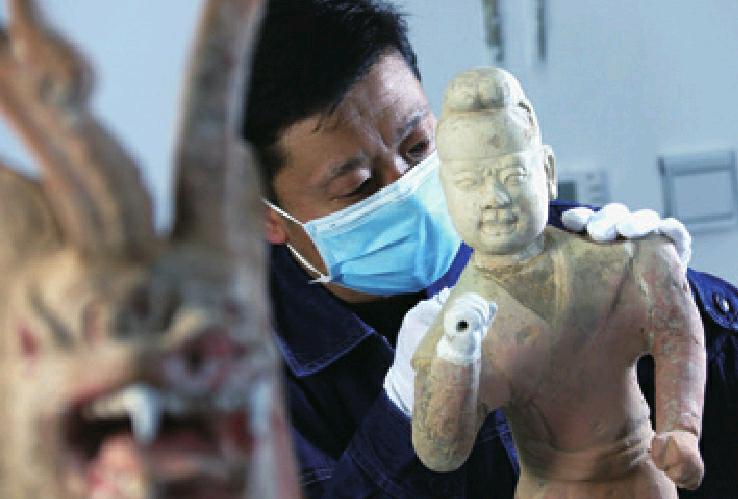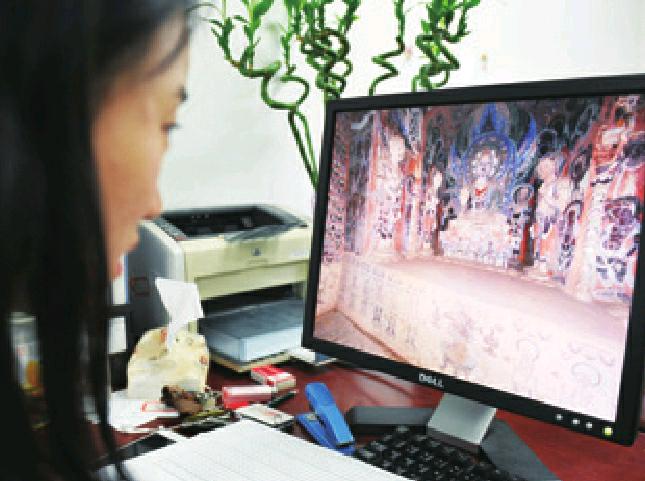Shared Treasure
2016-07-01ByZhaoWei
By+Zhao+Wei
If Wang Yuanlu, a 20th-century Taoist monk and self-styled caretaker of a cluster of caves in Gansu Province in northwest China, had not sent an assistant to clear the sand pile that had accumulated in the grottoes, the world would have been poorer without the discovery of a wondrous cache of cultural relics. But thanks to the monks effort, the cleaning-up revealed tens of thousands of Buddhist manuscripts and artworks in a blocked cave and the Mogao Caves of Dunhuang became celebrated as a world cultural heritage site.
Unfortunately, after the relics were found, the caves attracted a number of foreign visitors with an eye to acquiring the trove. With cultural relic preservation laws being nonexistent in those days, many of the manuscripts, murals and statues were shipped overseas and lost from China.
This year, more than 110 years after the first findings of the treasure trove, the Mogao Caves can be rediscovered by people worldwide thanks to the initiative of the Dunhuang Research Academy, a national institution entrusted with the conservation, management and research of the Mogao Caves and two more similar clusters. Digital Dunhuang, a project which comprises high-resolution images of 30 caves and their contents, can be viewed on the Internet.
“Digital Dunhuang uses modern technology to photograph the murals and statues in the caves and provide information on them,” Wang Xudong, director of the academy, said at the launching ceremony. “It has a digital database to store and preserve Dunhuang culture and art resources, providing infinite research and other prospects. Visitors all over the world can see the murals created during different historical periods from their own homes.”
The 30 caves chosen are said to be the most classic ones, created between the year 368 and 1368, during the reign of 10 prominent dynasties. Some of the caves have been opened to e-visitors for the first time.
This is part of more extensive work by the academy which includes digital image collection from 120 caves. There are also threedimensional digital reconstructions of 20 sculptures.
“I had been expecting this for a long time,”said a commentator on the Chinese microblogging site Sina Weibo. “When I saw the beautiful murals and sculptures on my computer screen, I almost cried. Its so amazing! The experience is wonderful, as if I am standing close to the murals. I can see all the details of the statues of the Bodhisattvas [enlightened beings, according to Buddhism]. I hope this project covers more caves in the future.”
Digital Dunhuang is the brainchild of Fan Jinshi, the septuagenarian honorary director of the academy, who is hailed as the “Daughter of Dunhuang” for dedicating more than five decades to the preservation of the caves.
The Mogao Caves were opened to the public in 1979 and made it to the UNESCO World Heritage Site list in 1987. As news of the amazing treasure trove spread, more and more tourists flocked to Dunhuang and the increasing number of visitors brought a series of problems.
Since the murals and sculptures are mostly made of clay and wood, they have become fragile with the passage of time. The arrival of too many visitors and the ensuing dust, moisture and camera flashes contributed to the decomposition of some of the priceless works of art, creating a conflict between conservation and public appreciation. Fan, appointed deputy director of the academy in 1984, began to think of how to find the best solution to the problem.
The academy established a digital center in 2006 to digitize the cultural relics and preserve them for posterity. It has been working with Zhejiang University, Wuhan University, the Chinese Academy of Sciences and digital technology companies.
On August 1, 2014, the academy opened its Digital Exhibition Center to the public. Visitors to the Dunhuang caves are asked to visit the center before they enter the caves. They spend about an hour here watching two documentaries. One focuses on the relationship between the ancient trade route known as the Silk Road on which the Mogao Caves are situated. The other details seven representative caves on a circular screen.
Fan explained why they chose a circular screen in a TV interview: “We would like to offer visitors the sense of being present in the caves and immersed in their contents. We thought of a lot of ways to do it, and after repeated attempts, the circular screen was found to have the most immersive approach to the caves. When people watch the documentary, it feels like they are standing inside the caves, seeing clearer and brighter images. Together with the audio introduction, visitors will have a better understanding of the historical and artistic value of the caves.”
In 1998, the academy collaborated with the Northwestern University of the United States to digitize the Dunhuang murals. The project was supported by the State Administration of Cultural Heritage and sponsored by the Andrew W. Mellon Foundation. The cooperation, the first international cooperation project on the Dunhuang relics, ended in 2003.
With the launch of Digital Dunhuang, more and more overseas institutions and organizations have become aware of the Dunhuang Research Academy and are showing interest in establishing a cooperative relationship with it.“The website shows to the world the achievements we have made in digital preservation,”Wang Xudong said. “It also indicates that Dunhuang belongs to the world.”
The director is hoping that more international organizations will join the project so that the world can enjoy the fruits of the cultural exchange.
